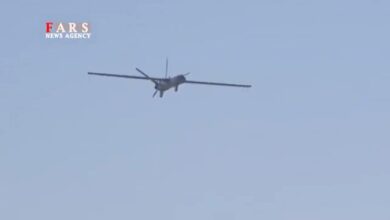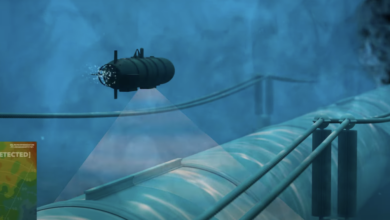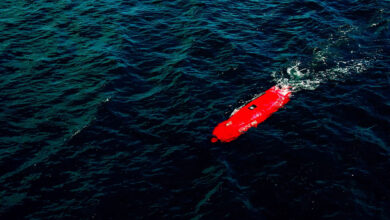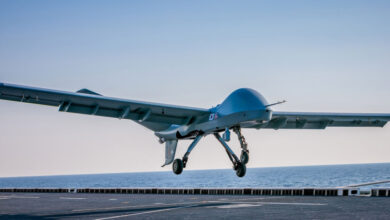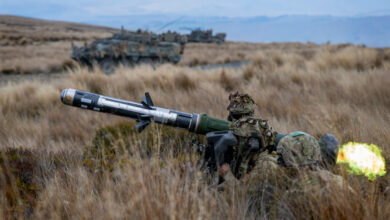Mali: French actions near Hombori ‘neutralize several terrorist fighters’
The France-led Operation Barkhane targeted insurgents in Mali in a series of recent actions in the Hombori area, the French Ministry of the Armed Forces said.
On February 13, the Barkhane force conducted an operation in the Mali-Burkina Faso-Niger tri-border region that “resulted in the neutralization of several terrorists and the destruction of important logistical assets” in the Hombori area of Mali’s central Mopti province, the ministry said in a Tuesday release.
After a “lengthy intelligence operation that increased knowledge of the area,” the Barkhane force conducted a search for armed terrorist groups (GAT) in the Hombori area, where they “detected a GAT camp and noted the presence of numerous armed men.”
Mirage 2000 fighter jets and Tigre helicopters “jointly engaged,” neutralizing “several terrorist fighters” and destroying a “significant” quantity of materiel, the ministry said.
The French Armed Forces groups fighters killed, injured or taken prisoner under the terms “neutralized” or taken “out of action,” according to AFP.
The action was conducted in an area where Barkhane forces had been active over the previous week.
On February 8, a Mirage 2000 patrol “intervened in support of a FAMa [Malian Armed Forces] detachment northeast of the town of Hombori in the Gourma,” the ministry said in a February 13 release.
The Mirages carried out a “show of force” which “helped to rout the terrorists who had ambushed the FAMa.”
A Malian forward tactical aerial reconnaissance team previously trained by Barkhane enabled direct communication between the aircraft and ground troops.
“At the same time, a Tigre helicopter patrol was also engaged in the area of operation,” quickly coming into contact with militants. The helicopters neutralized one militant and destroyed their motorcycle, the ministry said.
Searches in the Hombori area following the ambush led to a February 12 Barkhane action targeting a militant camp in the Gossi area. Gossi, in Timbuktu province, is around 75 km (47 miles) northeast of Hombori.
Airstrikes carried out by a Mirage jet and fire from Tigre helicopters led to “several” terrorists being “put out of action” and a “significant” quantity of materiel destroyed. A group of commandoes then secured the area and motorcycles, weapons, military clothing and a large amount of fuel were seized.
The February 18 release noted that a Reaper drone performed the air mission command function during the joint Mirage-Tigre action.
Both Islamic State and al-Qaeda affiliated groups are active in the wider area, but the ministry did not say which groups were targeted in any of the actions.
French operations against Islamist militant groups in the tri-border area appear to have increased in pace since late last year.
The ministry said more than 30 “terrorists” were put out of action in Barkhane actions in Mali in the first week of February. On January 23, the ministry said more than 30 “terrorists” had been put out of action in operations in the Liptako-Gourma region.
On January 16, the ministry said more than 1,000 troops from Mali, Burkina Faso, Niger, and Barkhane had taken part in a joint operation in the Liptako-Gourma region since early January and that 15 “terrorists” were put out of action. A week earlier, it said more than 50 “terrorists” were put out of action in a series of operations conducted in Mali between December 20 and January 5.

Growing French presence in the Sahel
The French military presence in the Sahel began in 2013 with Operation Serval in Mali, and evolved in August 2014 into Operation Barkhane, which has a mandate for counter-terrorism operations across the region. The Barkhane force focuses activity in insurgent-hit Mali, Niger and Burkina Faso, working alongside local troops and other international operations, including the regional G5 Sahel Joint Force (FCG5S), which comprises troops from Burkina Faso, Mali, Niger, Chad and Mauritania, and MINUSMA, the U.N. stabiliization mission in Mali.
Earlier this month, Armed Forces Minister Florence Parly said that the number of French troops deployed to the Sahel would increase from 4,500 to 5,100.
France and the G5 Sahel states inn January injected new urgency into the counter-terrorism fight, announcing a new Coalition for the Sahel which will see increased coordination between French and local forces. Barkhane and FCG5S forces operating under joint command will focus on the Mali-Burkina Faso-Niger tri-border zone, targeting Islamic State as a priority.
Barkhane is already building command coordination with Sahel Coalition partner forces, setting up dedicated coordination mechanisms in Niger’s capital Niamey and Chad’s capital N’Djamena, where Barkhane is headquartered, while Mali has launched Operation Maliko, a new counter-terrorism operation that will take into account cross-border, regional and international cooperation.
France has also been trying to build support for the new special operations Task Force Takuba that will train, advise, assist and accompany local forces in their fight against Islamic State and al-Qaeda affiliates in the region. Takuba will declare initial military capability in the summer and will be fully operational by the autumn.
France hopes that Takuba will comprise around 500 special forces personnel, according to Le Monde. The new French deployment will include around 50 special forces personnel who will form the nucleus of Takuba, Le Monde reported.
So far, Estonia, the Czech Republic, and Sweden have announced plans to contribute to Takuba, and discussions with Finland and Norway are reportedly ongoing, but Germany and the U.S. have declined.
Belgium is to contribute three staff officers to Takuba according to the Belga news agency, but the current caretaker government’s Foreign Minister Philippe Goffin told AFP on February 13 that committing troops to such an operation would require a government with a full mandate, plus the approval of parliament.
Barkhane has an international dimension, with European partners contributing troops and equipment. Estonia is to almost double the size of its force protection contingent this year, Denmark has deployed two Merlin helicopters, and three Chinook helicopters from the United Kingdom currently support the operation.

Islamist insurgents in the Sahel
The complex insurgency in the Sahel began in Mali in 2012, when a Tuareg separatist uprising was exploited by al-Qaeda-linked extremists who took key cities in the desert north. Former colonial power France began its Operation Serval military intervention the following year, driving the jihadists from the towns.
But the militant groups morphed into more nimble formations operating in rural areas, and the insurgency gradually spread to central and southern regions of Mali and then into Burkina Faso and Niger.
More than 4,000 people were reported killed in militant attacks in the three countries last year, according to the U.N., and Secretary-General Antonio Guterres has warned that the spiraling violence in the Sahel has spread to coastal states of West Africa.
Many armed groups including Islamic State are active in the Sahel region, but the majority of attacks are attributed to JNIM, which formed in March 2017 from a merger of several smaller groups. JNIM’s leadership has pledged allegiance to al-Qaeda leader Ayman al-Zawahiri.
Since May 2019, ISIS has attributed insurgent activities in the Sahel area to ISWAP, its West Africa Province affiliate that split from Boko Haram in 2016, rather than to Islamic State in the Greater Sahara. ISWAP’s main area of operations is the Lake Chad area of Nigeria, Niger, Chad and Cameroon.
Macron has said the Sahel Coalition would prioritize the fight against ISIS in the Mali-Burkina Faso-Niger tri-border area because it is the most dangerous.



